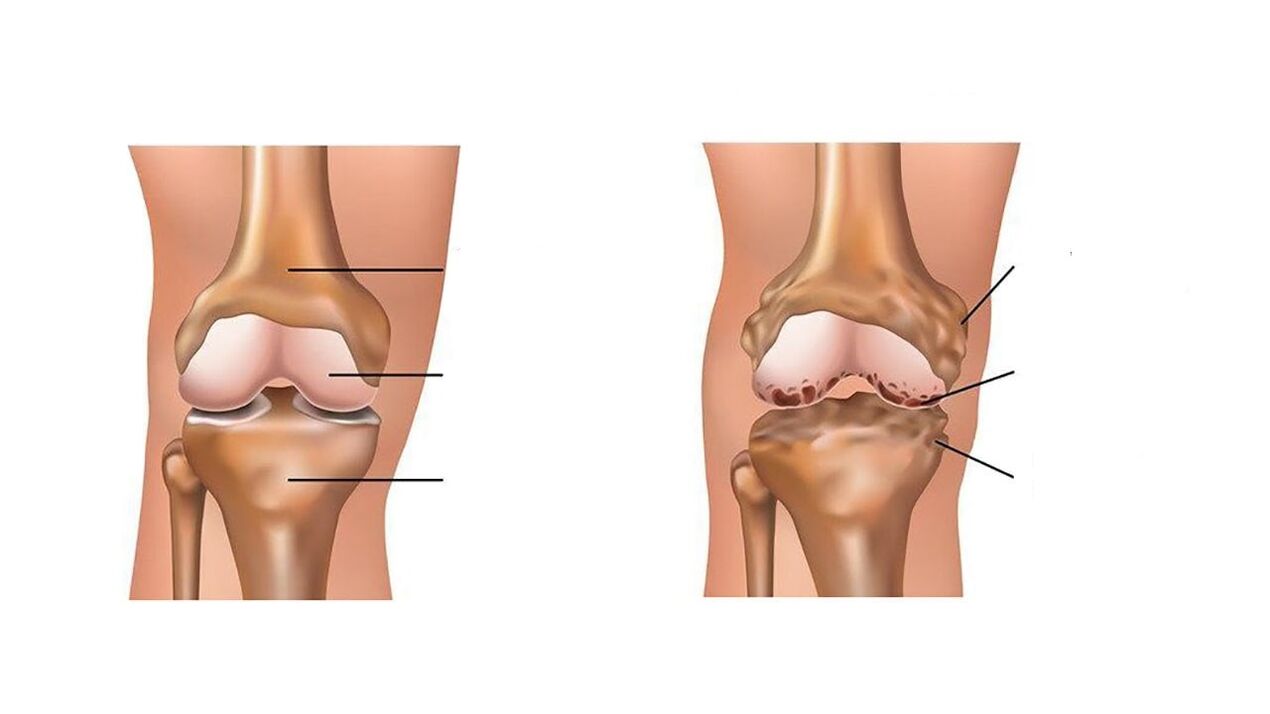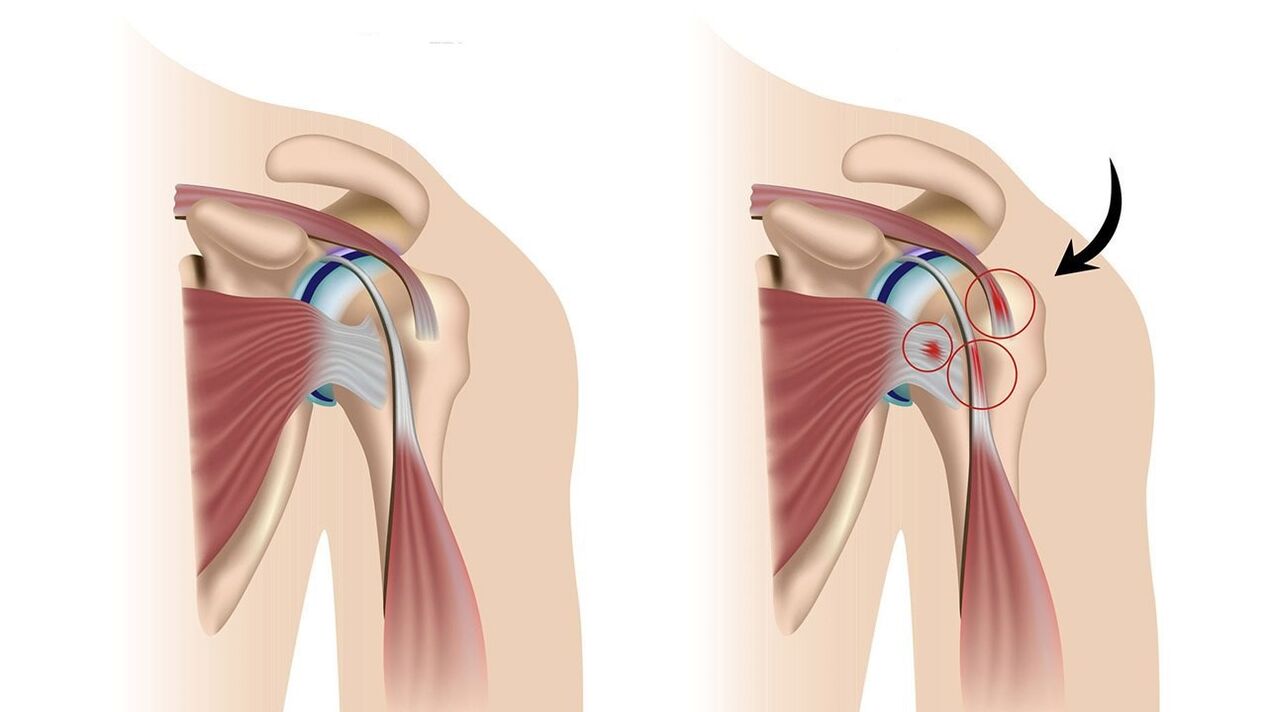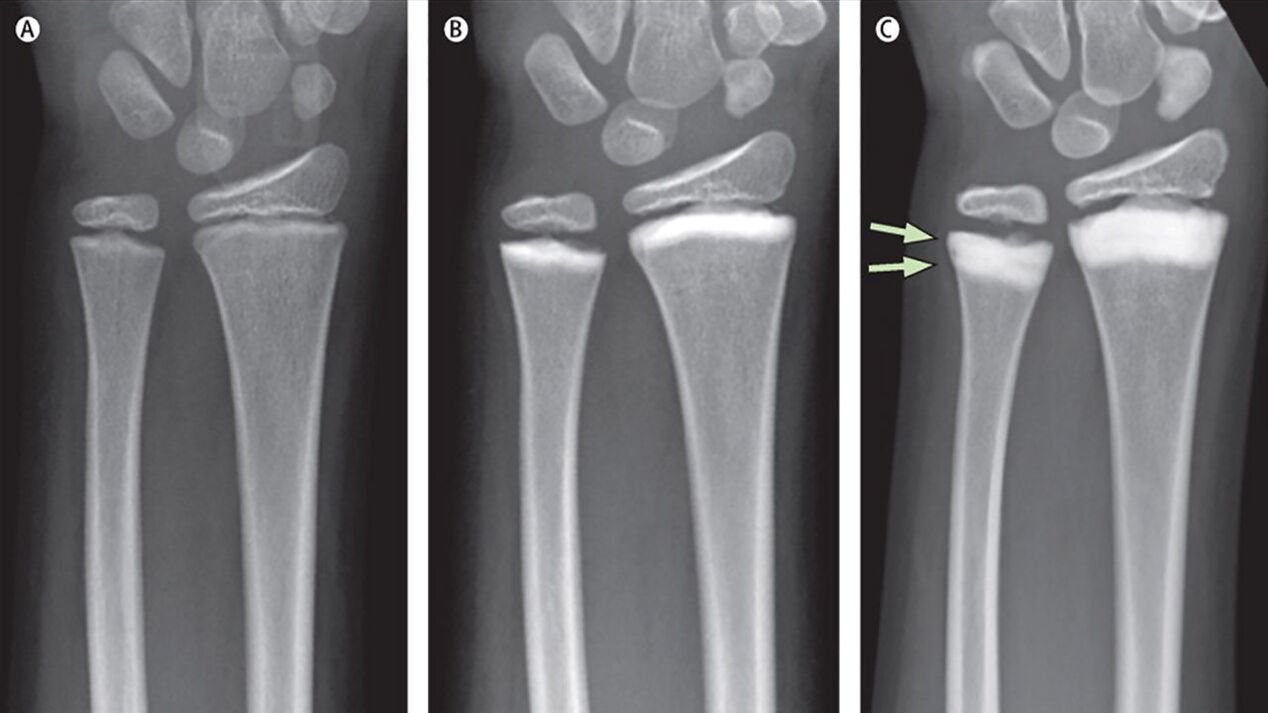Symptom: Joint pain.

Possible causes: trauma, arthritis, arthrosis, osteoarthritis.
Physician: The therapist fixes complaints, sends for examination and, based on its results, refers the patient to a narrowly specialized physician.
Treatment: Individually prescribed in each case.
Prevention: reduce the load on the joints, maintain a healthy lifestyle, timely examination by a doctor, diet.
Why do joints hurt?
Joints can be damaged for two reasons: arthritis, inflammation of the joint tissues or arthrosis (osteoarthritis), degenerative-dystrophic process, or destruction of the bone-cartilage elements of the joint. The diagnosis should be made by a doctor, but you can navigate the symptoms yourself.
Inflammation in arthritis is like a forest fire: everything starts violently, the joint swells and it hurts a lot even at rest, and when you try to make the slightest movement, the pain intensifies. The skin in this area becomes red and becomes hot to the touch.
With arthrosis everything is different: Destroys funds slowly and unnoticed from the beginning. Joint pain, initially small, painful, only during movement, quite tolerable, increases over time, becomes constant and strong to disrupt relaxation and sleep. The insidiousness of this pain lies in the fact that it is delayed in relation to the pathological process going on in the joint and occurs only when X-ray images show signs of destruction of the corresponding joint, unfortunately irreversible. It is the proliferation of the spine (marginal osteophytes) at the edge of the articular surfaces of the bones that form the joint, narrowing of the joint space and signs of osteosclerosis - areas of abnormal growth of bone density. If osteoarthritis affects one joint, say, the knee, the biomechanics change and the function of the adjacent joints - the hip joint and the ankle - is disrupted. They experience increased and, at the same time, uneven loading and usually drain faster. Thus, osteoarthritis damages the joint and the pain intensifies and can spread to all new joints.

Types of pain
The type and nature of the pain sensation depends on the cause that caused them.
Joint pain with influenza and acute respiratory infections against a background of high (up to 40 ° C) temperature. This pain disappears on its own as soon as the temperature normalizes and does not require special treatment.
During arthritis pain:
- Sharp,
- Painful,
- Pulsating
- Shooting,
- Becomes rest and gets stronger while performing certain movements,
- Giving to neighboring territories,
- On examination (palpation) it hurts everywhere, on the entire surface of the joint, especially in the joint space.
Particularly intolerable is periarthritis - inflammation of the tissues around the joint (its sacs, tendons and yokes). How everything happens can be explained by the example of the shoulder joint. First, the joint begins to ache. The pain very quickly becomes unbearable, almost unbearable. It strengthens the mouth and neck area, it gets stronger (and it is often accompanied by cramps) when you stretch your shoulders at shoulder level or bend at the elbow and bring your back back. At the end of the neck, which rests on the front shoulder joint and in the same place on the back are the pain points. The pain increases when you press on the finger. With such intense sensations, the joint needs immobilization - the hand should be hung on the cortex, try not to move. This is a necessary condition for the success of the treatment.

ᲛImportant! Choose an adequate analgesic and anti-inflammatory therapy as soon as possible after the examination. This will reduce the severity of joint inflammation, reduce pain and improve quality of life.
With arthrosis, joint pain is different:
- The pain is initially mild and irrelevant, its character resembling a wave - at certain periods it does not last for weeks or even months. Over time, without treatment, the pain waves intensify and become more frequent, and the gaps between them decrease.
- Pain in the beginning: it explodes on the first attempt to take a step, raise the arm, bend. Then the joints develop and the pain is relieved.
- Mechanical rhythm - the joint begins to ache during loading. At first, the pain occurs with a high load - lifting weights, climbing stairs, long walks, playing sports. Later, even minor movements respond to the pain. But at the same time, unlike the unpleasant sensations of arthritis, the pain during arthrosis disappears when the joint is relaxed, providing it with relaxation. That’s why doctors talk about mechanical rhythm: movement causes pain, while the rest relieves it.
- Night discomfort. At rest, as such, there is no pain, but lying is uncomfortable, you constantly want to change your posture, find a position in which you can forget about the joints and spine, but it does not work. The joints hurt and that’s it! Morning shackles: woke up, the pain is not yet, but as if chained or tightly wrapped - the joints do not obey, but gradually disappears stiffness, restored range of motion in the joint.
- Protective posture. When a joint hurts, you want a so-called antalgic-pain-relieving position that will make it easier. This is best seen in the example of the spine: it also consists of joints. When one of them meets and with it the nerve root gets into the bone marrow, the acute pain is caused by sciatica. Anyone can see how a poor man is distorted after diagnosing a person with sciatica. In fact, with the help of this "skewness", which contributes to muscle spasm, the body tries to reduce pain to a minimum.
Osteoarthritis of the hip and knee
The pain from the hip joint injury (and it most often affects one side) is localized in the upper thigh and radiates to the knee. He usually starts getting sick in the afternoon when he has already worked quite a lot. The pain increases while walking, while during rest it weakens and disappears.
Knee joints most often suffer from both at the same time. They open easily and begin to ache when bent. E. წ. Ladder symptom is characteristic of knee injury. Escape from it becomes more painful than climbing; Patients do this by turning sideways. Sometimes a joint is bent because of a bone growth (osteophyte) or a fragment of it (such a "missing" bone fragment inside the joint is called a "joint mouse"). Joint blockade is accompanied by increased pain when you try to bend or straighten it.
Mobility problems in the knee are not always related to arthritis. Sometimes joint healing can be "fake". The most common causes of pseudoblocks are:
- Swelling (Excess fluid in the joint capsule may prevent complete flexion and elongation of the joint).
- Inflammation (inflammation of the tissues in the knee, for example in rheumatoid arthritis and gout).
- Improper movement of the knee cap in the joint (accompanied by severe pain).
- Tissue irritation in the joint.
- Knee injury (Any serious injury to the knee, such as a wound, can cause muscle spasm).
ᲛImportant! In case of joint obstruction, active movements in the joint are impossible, it is necessary for the doctor to consult an orthopedic traumatologist as soon as possible - ambulance room, clinic, hospital. Do not hesitate to call an ambulance - this is a good reason to call, as you will not go far on one foot and you may not be able to get to the clinic yourself.
Diagnosis
Depending on the nature of the pain and the appearance of the affected joint, a preliminary diagnosis (arthritis or osteoarthritis) can be made even by a non-specialist. But hurry to confirm admissions to the district clinic!
Which doctor should I go to?
In case of joint pain, you should schedule an appointment with your local therapist. It performs the functions of a medical dispatcher: it fixes complaints and clinical symptoms, examines the patient and, based on its results, decides which doctor to refer to each particular patient. A variety of specialists are involved in maintaining joint health:
- Arthrologist.
- Orthopedic Traumatologist.
- Rheumatologist.
- Vertebrologist (if the spinal joints are affected).
- Podiatritis (when it comes to foot joints).
- Surgeon.
- Oncologist.
- Neurologist (if the joint has already been treated but the pain remains in it).
- Dietitian (if the joints hurt due to metabolic disorders, for example, goiter or the presence of excess weight).
What tests and examinations should we do?
The examination begins with the simplest - clinical (finger) and biochemical (venous) blood test with signs of inflammation, as well as a general urine test. In some diseases of the joints, the kidneys are involved in a pathological process. Excess uric acid in the urine may indicate gout as a cause of joint disease.
Laboratory examination of the synovial fluid, which is inside the joint, helps to detect the inflammatory process and clarify its nature. It is obtained by puncture of the joint capsule - puncture. If necessary, a histological examination of the synovial membrane fragment is performed, which covers the inside of the joint cavity.
A proven diagnostic method is a joint x-ray with two standard prognoses. This will help visualize narrowing of the joint space, bone growth, osteoporosis, and osteosclerosis (decrease and increase in bone density).

Currently, complete information about the condition of the joint is provided by magnetic resonance imaging.
Which diseases of the joints can cause pain?
There are more than a hundred such diseases. Osteoarthritis is widespread in the elderly, and in young people - rheumatoid arthritis and injuries (bruises, fractures, ligament injuries).
"With arterial hypertension, commonly referred to as hypertension, joint disease tops the list of the most common causes of medical care. Doctor of Science, Professor of Rheumatology - Arthrosis is the most common of all diseases of the joints, 97% of people over the age of 65 have this disease. And not just because of the pain syndrome: 3-5 years after the onset of the disease, this type of arthritis inevitably ends with the appointment of a disability group for the patient. "
How to get rid of joint pain urgently?
Analgesics can quickly overcome the pain: the pain can not be tolerated in any case, if you do not want to turn acutely into chronic. This metamorphosis can happen very quickly - in 3-4 weeks, so getting rid of joint pain should be an urgent task. The joint starts to ache as soon as you put stress on it. Therefore in case of pain, nonsteroidal anti-inflammatory drug (NSAID) with good analgesic effect should be taken half an hour before any physical activity.
If joint pain worsens at night, in addition to going to bed, your doctor may recommend taking metamizole sodium, as well as drotaverine in combination with nicotinic acid, to improve local blood circulation.
Local therapy
Nonsteroidal anti-inflammatory drugs have strong side effects - they can damage the gastric mucosa before ulcers, so they try to use them topically as part of all ointments and gels with anti-inflammatory and analgesic properties. They are usually washed twice a day on the affected joint. The pain is also relieved by special plasters with magnetic powder that are glued to the joint or spine.
What if the funds are not processed?
Joint disease, if left untreated, can lead to loss of freedom of movement and disability. If one or more large joints are damaged, they can be replaced artificially. Multiple joint damage (polyarthritis) is usually the result of a general disease of the body, such as psoriasis. In this case, the onset of the disease is all the more dangerous because it develops rapidly and can end your life quite quickly.
Conclusion
Joint pain is familiar to almost everyone and it occurs for two main reasons - inflammation (arthritis) or destruction of bones and cartilage (arthrosis). Interestingly, the joints in the hands and feet hurt in different ways. The upper extremities, unlike the lower extremities, usually do not affect the joints but the surrounding tissues (tendons, tendons, bags). This is caused by the different types of load that the hands and feet experience - both dynamic and static. You have to deal with joint pain from day one: very few people will like the prospect of disability for the next 10-15 years. In the prevention of joint diseases, it is important to lose extra pounds to reduce stress on the joints and to address concomitant pathologies (allergies, diabetes).































